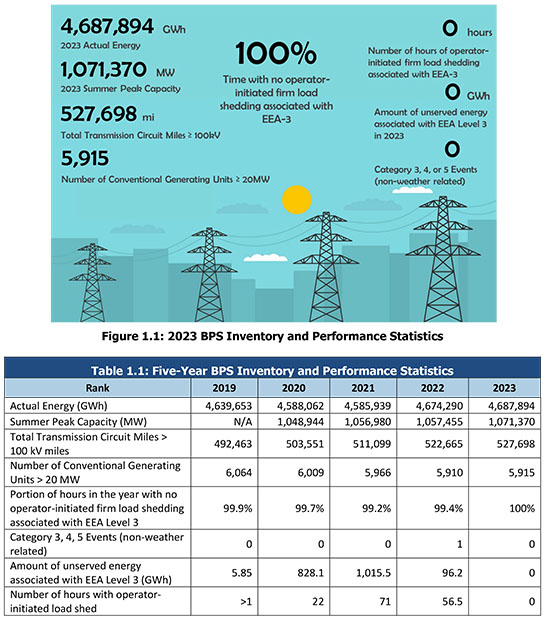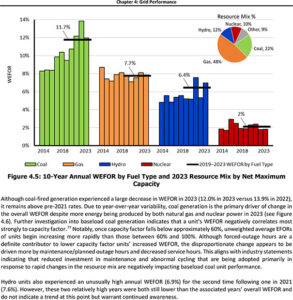Releasing its annual State of Reliability report this week, NERC sounded a note of confidence in the “overall resilience” of the North American electric grid. However, the ERO also observed that the grid continued to face growing challenges over the last year that will require collaboration of multiple stakeholders to address.
The report reviews the performance of the electric grid over the past year in order to inform regulators, policymakers and stakeholders about the most significant reliability risks, and to describe the ERO Enterprise’s actions in response to those risks. This year’s report comprises an overview, which is a high-level summary of NERC’s findings, along with a more detailed technical assessment.
With “relatively mild weather [and] enhanced protection measures” across most of the continent, system operators faced fewer stressors during the grid’s peak winter and summer months, John Moura, NERC’s director of reliability assessment and performance analysis, said in a statement. The ERO found that utilities provided 4.69 billion GWh last year, higher than any of the past five years, which was provided by 5,915 conventional generating units of at least 20 MW and delivered by more than 528,000 miles of transmission lines.
The grid last year also experienced no non-weather-related Category 3, 4 or 5 events; no hours of operator-initiated firm load shedding associated with a Level 3 energy emergency alert; and no unserved energy associated with a Level 3 EEA. By comparison, in last year’s State of Reliability report, NERC reported 56.5 hours of firm load shedding and 96.2 GWh of unserved energy associated with Level 3 EEAs.
NERC said one reason the grid performed better last year was that grid operators responded quickly to the kind of severe weather events that have tested the grid in recent years. According to the National Oceanic and Atmospheric Administration, the U.S. experienced 28 “billion-dollar events” last year, defined as weather or climate disaster events that caused damages of at least $1 billion (adjusted for inflation) — well over the five-year average of 20.4 events.
The ERO acknowledged that the year’s biggest severe weather event was not captured in NOAA’s data — namely, the wildfires in Canada that burned more than 71,000 square miles of forest areas between June 20 and July 26, the record for the country. NERC’s report highlighted the impacts to Quebec, where the largest number of fires occurred. One hundred and one small outage events were reported as a result of the fires; however, these were mostly short, with an average duration of 1.2 hours, and “generally not overlapping.”
“Transmission metrics were disproportionately impacted by the short-duration outages associated with these wildfires, specifically within the Quebec Interconnection,” NERC said in the report. “However, due to operator actions, as well as the fires’ varied timing and geographical locations, the actual impact on [grid] reliability was minimal.”
While the ERO was upbeat about the grid’s resilience in the face of extreme weather, it did note that forced-outage rates among conventional and wind generation remained at “historically high levels [in 2023], exceeding rates for all years prior to 2021.” In a media webinar, Jack Norris, an engineer with NERC’s Performance Analysis division, pointed out that the grid experienced a 7.8% weighted equivalent forced-outage rate (WEFOR) in 2023, the third-highest on record for the last 10 years after 2021 and 2022.
Coal units recorded the highest WEFOR at 12%; this is below the previous two years but still higher than the average of 10% between 2014 and 2022, Norris said. Hydropower also experienced an “unusually high outage rate” of about 7%, he added, which put it above the 10-year average along with natural gas. Nuclear power was the only outage type with a below-average WEFOR, with just under 2%.
Norris said the outage rates for coal generation are consistent with “increasing WEFOR rates for coal that we’ve been seeing over the last several years and [align] with industry statements [about] reduced maintenance on older coal units as they’re being phased out.” He also noted that utilities have had to cycle coal units on and off more often in recent years “to accommodate variable energy resources,” which strains these units, a likely cause of increased outages.





